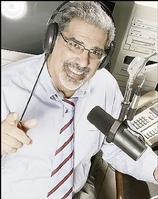Elaine Commissiong, Contributor

Derek Jones, a master of the art of speechmaking. - ANDREW SMITH/PHOTOGRAPHY EDITOR
MIDDLE AND upper-level managers, politicians, and community leaders in general are often called upon to speak publicly. The challenge is not only knowing what to say but also how to say it.
Speeches in the main have one of three main functions. The speech may seek primarily to inform, or it may mainly be to persuade, or to initiate action. Speeches such as those given as wedding toasts have been given the category of special occasion speeches.
For many, making a public speech is a traumatic experience. But it need not be. For there are simple rules that may be followed, which are effective in getting you through the task no matter how inexperienced you may be as a public speaker.
The rules of writing an essay also apply in public speaking. It follows a simple rule: "Say what you are going to say; say it, and then say that you have said it."
This simple rule defines a practical technique, which is applicable to any formal presentation, written or oral. In the introduction, you say what you intend to say. In the body of the presentation you say it, and in the conclusion, you say that you have said it.
The purpose of the introduction is to establish your credibility as a speaker. It is, therefore, a mistake (as is seen too often
locally), to adopt a stance of false modesty and to publicly express doubt on your own ability to deliver. If you doubt yourself then quite likely, so too will your audience. The introduction, usually just a few sentences long, also has the purpose of capturing the audience's attention. The proper salutation or greeting of the audience is, therefore, a key part of the introduction, and should utilise the appropriate order of precedence. Avoid being tempted to list everyone (including audience members) so that the salutation becomes as long as the main address should be.
Strategies which may be used to further grab the audience's attention include humour, asking a rhetorical question, using a quotation, or telling an anecdote. We in Jamaica love parables, or anecdotes; so these usually go over well with most audiences. They are also often humorous. Humour says to your audience, "I am confident? I have something worthwhile to say, sit back and enjoy!"
Jamaica has several outstanding speakers, with one such being attorney Derek Jones. who has the distinction of being admitted to the prestigious International Speakers Association of the United States. His presentations are characteristically punctuated by quips, which keep the audience engaged, while at the same time informed.
The introduction also previews the main message of the speech.
The body of the speech is of course where the main points are delivered supported by facts, examples and statistics considered relevant. Repetition of a key point may be used for emphasis and to keep the audience's attention. The use of verbal signposts such as enumerating the points being made as in: "First let me tell you ?" or transitional words and phrases such as "Therefore", "On the other hand", "In addition," are effective ways of connecting the ideas being presented and helping the speech to flow
The conclusion, like the introduction, is brief, but presents the last opportunity for the speaker to leave a lasting impression. The points that have been made in the body of the address should be re-emphasised (briefly), and the message extended to a broader context, by making recommendations to the audience. The speech should be concluded within 15-20 minutes - the average attention span of most persons.
For all but the seasoned speaker, speechmaking and the Speechwriting that precedes it are often nerve wracking experiences, but they can be made easier by preparation focused on engaging and keeping the audience's attention and delivering the message in a simple, but organised way. Like everything else in life, in Speechwriting, "practice makes perfect." Taking that first step by agreeing to deliver the toast at a wedding reception may be a good start to a career of brilliant public speaking!
Elaine Commissiong is the Executive Director of CARA LTD; a Communications Agency E-Mail: cara @ kasnet.com










